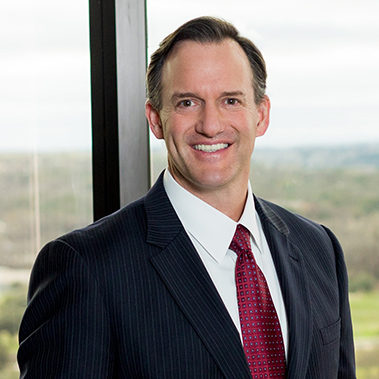In 2015, the U.S. Environmental Protection Agency announced the controversial “Clean Power Plan,” which was immediately the subject of a legal challenge and was subsequently stayed by the United States Supreme Court. Following the 2016 election, the EPA proposed withdrawing the Clean Power Plan, and, in August 2018, proposed the Affordable Clean Energy (ACE) rule to replace it.
| MENTION – 03/28/2017 |
 Mike Nasi Discusses Clean Power Plan Ahead of Trump’s Rollback |
Both the Clean Power Plan and the ACE rule attempt to regulate, under Section 111(d) of the Clean Air Act, the emission of greenhouse gases (GHGs) from existing power plants—electric generating units, or EGUs in environmental-law speak.
Before the EPA can regulate emissions from existing plants under §111(d), there must be a new source performance standard under §111(b) for new plants. Around the time the Clean Power Plan was announced, the EPA issued a new source performance standard for new coal-fired plants (and also for gas-fired plants). Under this standard, carbon capture and storage (CCS) was deemed to be the “Best System of Emissions Reduction” (BSER) for new coal-fired plants. This rule was also the subject of a legal challenge, but unlike the Clean Power Plan, it was never stayed or withdrawn.
In the newly proposed new-source rule, however, the EPA, citing high costs and limited geographic availability of CCS, rejected CCS as BSER for new, coal-fired EGUs. Instead, the new rule proposes to limit carbon dioxide emissions for newly constructed power plants based on the most efficient demonstrated steam cycle in combination with the best operating practices. For large EGUs (>2,000 MMBtu/h), the BSER is proposed to be super-critical steam conditions with an emission rate of 1,900 pounds of CO2/Mwh on a gross output basis. For small units (<2,000 MMBtu/h), the BSER is proposed to be subcritical steam conditions, with an emission rate of 2,000 lb CO2/MWh-gross.
Additionally, the EPA has proposed separate standards of performance for newly constructed and reconstructed coal refuse-fired units. For such units, the BSER is best available subcritical steam conditions, with an emission rate of 2,200 lb CO2/MWh-gross, regardless of the size of the unit. Lastly, the EPA is proposing to revise the standards of performance for reconstructed fossil fuel-fired steam units – which are also based on the most efficient demonstrated steam cycle – to make them consistent with the emission rates for large and small newly constructed units.
The EPA is not proposing any changes to the Standards of Performance for Newly Constructed or Reconstructed Stationary Combustion Turbines. The EPA is taking comment on whether and how to address concerns raised by stakeholders regarding the increased use of simple cycle aeroderivative turbines, including as back-up generation for wind and solar resources, whose operation may exceed the non-base load threshold described in the 2015 rule. However, any follow-up regulatory actions would be achieved through a separate and subsequent proposal.
In addition, the EPA is also taking comments on the regulatory threshold under §111(b) that a source category “causes, or contributes significantly to,” air pollution.
In addition, the EPA is also taking comments on the regulatory threshold under §111(b) that a source category “causes, or contributes significantly to,” air pollution. The EPA asks for the public’s views on the proper interpretation of this phrase, the agency’s historic approach to this requirement, and whether this requirement should apply differently in the context of greenhouse gases than for traditional pollutants. It is possible that this request signals a willingness on the part of the EPA to reconsider whether – before it can regulate GHG emissions under either §111(b) or §111(d) – it must first make a finding that emissions of GHGs from power plants “causes, or contributes significantly to,” air pollution. Previously, the EPA had concluded that once it had determined that the emission of one pollutant from power plants caused or contributed to air pollution it had authority under §111 to regulate the emission of all pollutants, including GHGs, without making a separate “causes or contributes” finding for any subsequent pollutants that the EPA wished to regulate.
The proposed rule was published in the Federal Register on December 20, 2018. The deadline to file comments is Feb. 19, 2019. A copy of the proposed rule can be found here.
 Meet Mike
Meet Mike
Austin partner Michael J. Nasi practices environmental and energy law. Mike’s compliance counseling, permitting, and enforcement defense work spans the following federal (and related state) programs: Clean Air Act, Clean Water Act, Solid Waste Disposal Act, Endangered Species Act, and National Environmental Policy Act. Mike is counsel for parties in ongoing EPA regulatory proceedings relating to carbon dioxide, interstate air quality, regional haze, and coal combustion residuals, including appeals pending before the United States Courts of Appeals for the Fifth, Eighth, Tenth, and D.C. Circuits, as well as the Supreme Court of the United States. Mike is a past Chairman of the State Bar of Texas Environmental and Natural Resources Law Section and serves on the faculty for Rice University’s “Leadership & Decision Making in the Energy Industry” course and as a guest lecturer in the “Energy Law & Policy” course at the University of Texas Law School.
 Meet Alisha
Meet Alisha
Alisha Mehta is an associate in the Environmental and Legislative section of Jackson Walker’s Austin office. Prior to joining Jackson Walker, Alisha served as a Judicial Law Clerk for Justice Don Willett at the Supreme Court of Texas. Alisha is fluent in Gujarati and proficient in Hindi and Spanish.
 Meet Mike
Meet Mike Meet Alisha
Meet Alisha
